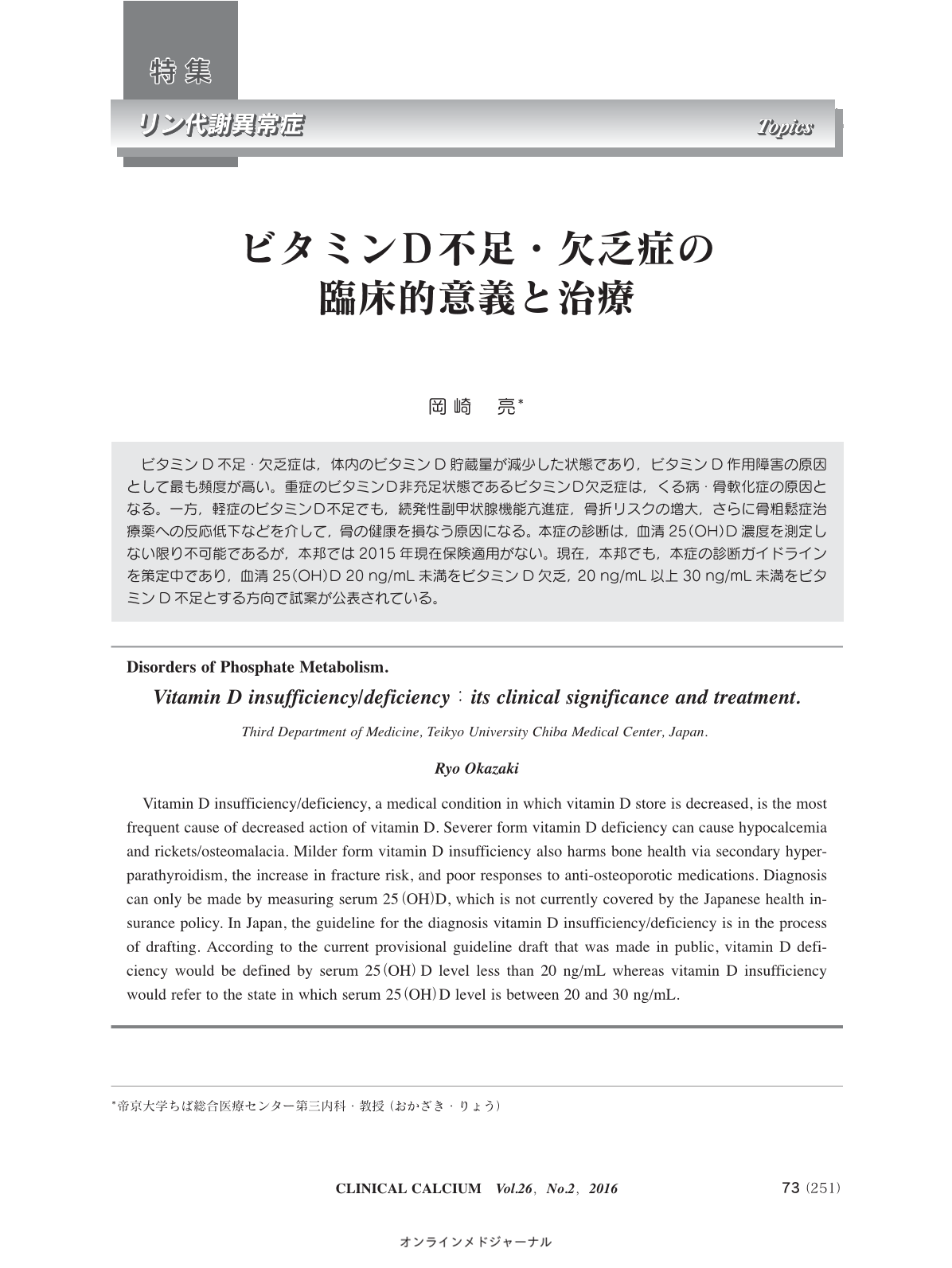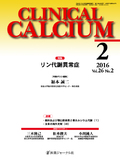Japanese
English
- 有料閲覧
- Abstract 文献概要
- 1ページ目 Look Inside
- 参考文献 Reference
ビタミンD不足・欠乏症は,体内のビタミンD貯蔵量が減少した状態であり,ビタミンD作用障害の原因として最も頻度が高い。重症のビタミンD非充足状態であるビタミンD欠乏症は,くる病・骨軟化症の原因となる。一方,軽症のビタミンD不足でも,続発性副甲状腺機能亢進症,骨折リスクの増大,さらに骨粗鬆症治療薬への反応低下などを介して,骨の健康を損なう原因になる。本症の診断は,血清25(OH)D濃度を測定しない限り不可能であるが,本邦では2015年現在保険適用がない。現在,本邦でも,本症の診断ガイドラインを策定中であり,血清25(OH)D 20 ng/mL未満をビタミンD欠乏,20 ng/mL以上30 ng/mL未満をビタミンD不足とする方向で試案が公表されている。
Vitamin D insufficiency/deficiency, a medical condition in which vitamin D store is decreased, is the most frequent cause of decreased action of vitamin D. Severer form vitamin D deficiency can cause hypocalcemia and rickets/osteomalacia. Milder form vitamin D insufficiency also harms bone health via secondary hyperparathyroidism, the increase in fracture risk, and poor responses to anti-osteoporotic medications. Diagnosis can only be made by measuring serum 25(OH)D, which is not currently covered by the Japanese health insurance policy. In Japan, the guideline for the diagnosis vitamin D insufficiency/deficiency is in the process of drafting. According to the current provisional guideline draft that was made in public, vitamin D deficiency would be defined by serum 25(OH)D level less than 20 ng/mL whereas vitamin D insufficiency would refer to the state in which serum 25(OH)D level is between 20 and 30 ng/mL.



